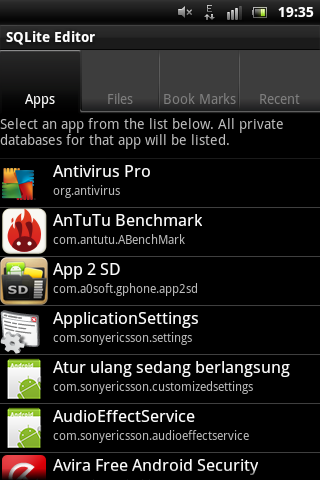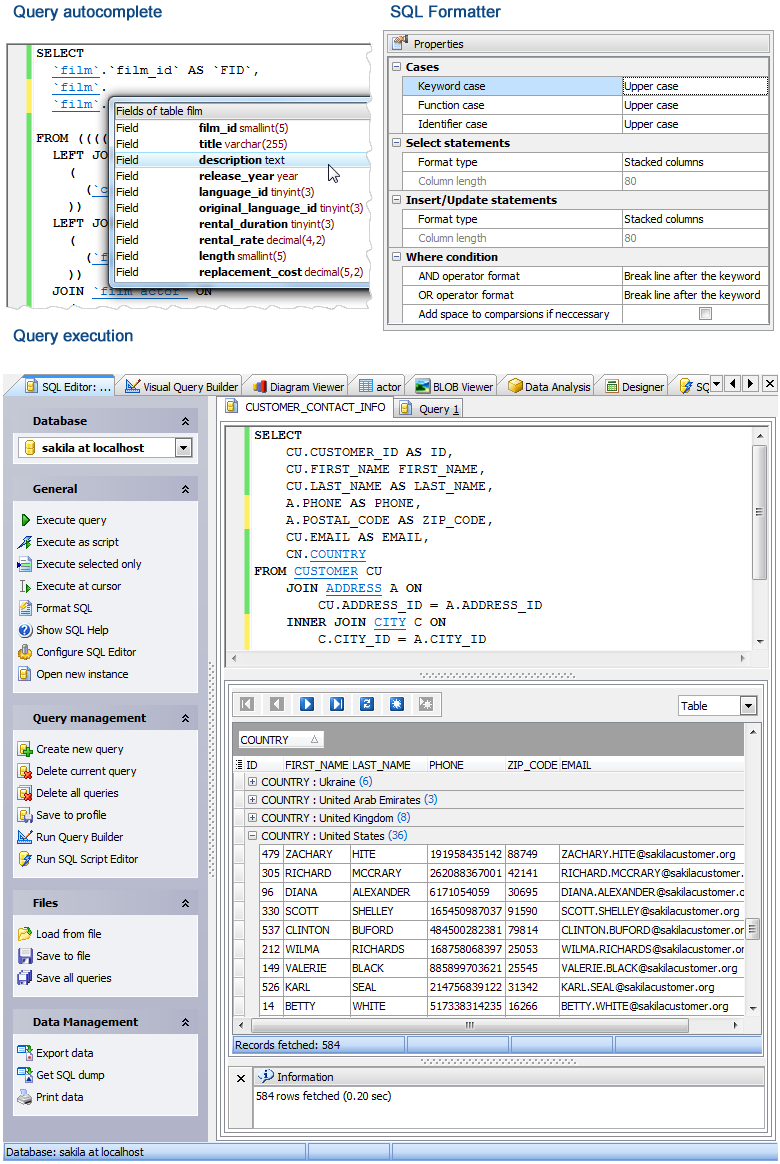

SQLite uses PostgreSQL as a reference platform. However, for simple queries with little concurrency, SQLite performance profits from avoiding the overhead of passing its data to another process. Therefore, SQLite is not the preferred choice for write-intensive deployments. It has less knowledge of the other processes that are accessing the database at the same time. SQLite, on the other hand, has to rely on file-system locks. In server-based databases, several writers will all connect to the same daemon, which is able to handle its locks internally. Databases in client–server systems use file-system permissions that give access to the database files only to the daemon process.Īnother implication of the serverless design is that several processes may not be able to write to the database file. Access control is handled by means of file-system permissions given to the database file itself. SQLite is called zero-conf because it does not require service management (such as startup scripts) or access control based on GRANT and passwords. SQLite read operations can be multitasked, though writes can only be performed sequentially.ĭue to the server-less design, SQLite applications require less configuration than client–server databases. It implements this simple design by locking the entire database file during writing. SQLite stores the entire database (definitions, tables, indices, and the data itself) as a single cross-platform file on a host machine. The application program uses SQLite's functionality through simple function calls, which reduce latency in database access: function calls within a single process are more efficient than inter-process communication. Instead, the SQLite library is linked in and thus becomes an integral part of the application program. Unlike client–server database management systems, the SQLite engine has no standalone processes with which the application program communicates. SQLite is one of four formats recommended for long-term storage of datasets approved for use by the Library of Congress. In 2011, Hipp announced his plans to add a NoSQL interface to SQLite, as well as announcing UnQL, a functional superset of SQL designed for document-oriented databases. In June 2004, SQLite 3.0 added internationalization, manifest typing, and other major improvements, partially funded by America Online. In September 2001, SQLite 2.0 replaced gdbm with a custom B-tree implementation, adding transaction capability. In August 2000, version 1.0 of SQLite was released, with storage based on gdbm (GNU Database Manager). Hipp based the syntax and semantics on those of PostgreSQL 6.5. The design goals of SQLite were to allow the program to be operated without installing a database management system or requiring a database administrator.
#SQLITE EDITOR SOFTWARE#
Hipp was designing software used for a damage-control system aboard guided-missile destroyers, which originally used HP-UX with an IBM Informix database back-end. Richard Hipp designed SQLite in the spring of 2000 while working for General Dynamics on contract with the United States Navy.

This opens the file in the system’s default application for opening text files.
#SQLITE EDITOR FULL#
Otherwise you’ll need to use the full path. This assumes that you’re in the same directory as the file. once to save the results to a file, then use the. When using a permanent file, you save the file in a specified location, then open it using the.

headers on again here, merely for demonstration purposes. When the text file opens, it contains the following: Here’s an example that combines those settings/commands.headers on mode csv.Īlso, as mentioned, if you’re on a Mac, you can alternatively use. For example, to output the results in CSV format, use. You can specify a variety of output formats using the. This is only because I had previously specified those settings. The query results in the previous example are formatted in columns with column headers. So in my case, TextEdit opened the following file: Formatting the Text File On the Mac, I can change the default program by right-clicking on a text file, selecting Get Info, selecting the desired program under Open With, and clicking Change All. When I ran that on my Mac, the results opened in TextEdit, because that’s currently the default program for opening text files. Here’s an example to demonstrate using the. Use this method if you have no intention of keeping the file. When using a temporary file, the temporary file is deleted after it has been opened in the text editor. This article provides examples of both methods. You can configure the SQLite command line interface to automatically open query results in a text editor.


 0 kommentar(er)
0 kommentar(er)
